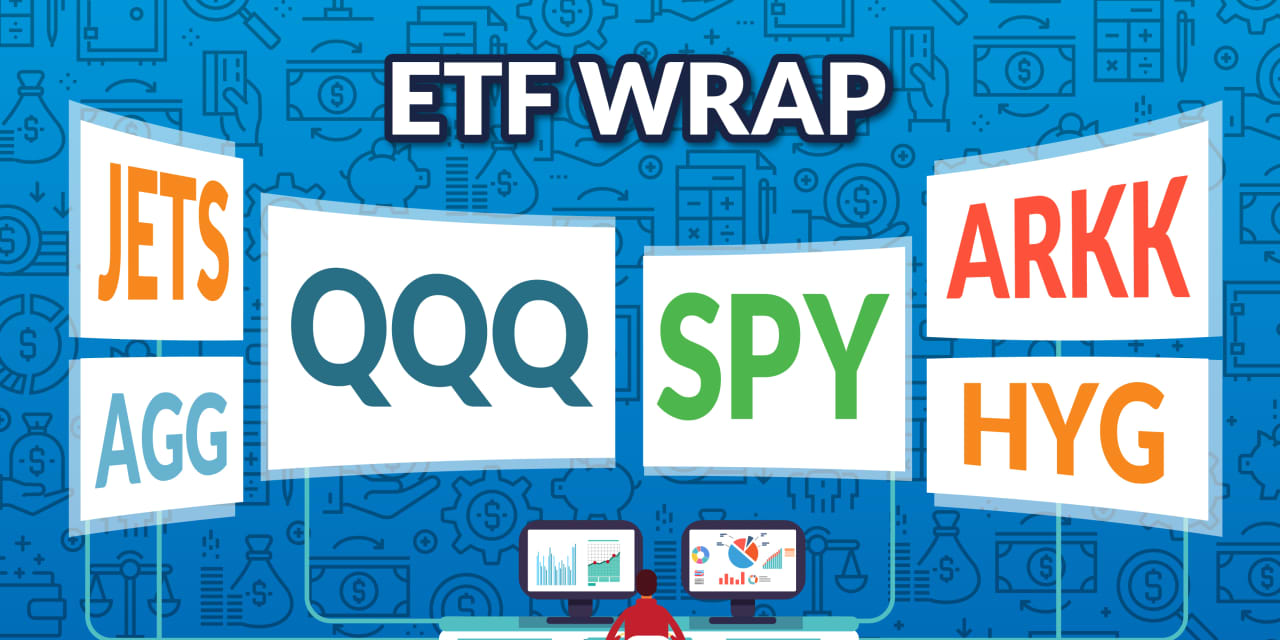Hello! This is MarketWatch reporter Isabel Wang bringing you this week’s ETF Wrap. After a decade of seemingly never-ending fee-cutting wars, ETF issuers raised their fees in 2023 as the landscape evolved beyond cheap index-tracking funds.
In this week’s edition, we look at a variety of reasons behind the industry-wide fee hikes, and what it means for ETF investors who continue to favor cheaper offerings.
Please send tips or feedback to [email protected] or to [email protected]. You can also follow me on X at @Isabelxwang and find Christine at @CIdzelis.
Sign up here for our weekly ETF Wrap.
ETF issuers and fund managers are causing headaches for investors big and small: They are charging higher fees for their products — and may continue to do so over the next few years, according to ETF strategists.
Among more than 2,000 ETFs that MorningStar tracked last year, there were 463 funds, or around 20%, that saw fee hikes in 2023. By contrast, only 234 ETFs, or around 11%, saw their fees decrease over the same period, according to Zachary Evens, manager research analyst at MorningStar Research Services.
It was the first time since 2009 that more ETFs raised their fees than cut them, reversing a decade-long trend that saw ETF fees drop across asset classes as issuers competed for market share in an increasingly saturated sector, Evens told MarketWatch.
A recent FactSet analysis showed that by the end of 2015, U.S.-listed ETFs cost an average of 0.27% each year on an asset-weighted basis. That number dropped to 0.17% in 2022 and fell again in 2023 — but by just 0.002%, or about one-fifth of the historic rate, said Elisabeth Kashner, director of ETF research and analytics at FactSet.
Among some of the largest ETF issuers with $50 billion under management at the end of 2023, First Trust imposed the largest average fee hikes of 0.016% last year, while Fidelity and Dimensional made the largest cuts of 0.015% and 0.012%, respectively, according to FactSet data (see chart below).
The broad shift in favor of an active, instead of passive, investment approach has profoundly influenced ETF providers to pass on the rising expenses of managing funds to their clients, according to ETF strategists.
See: Passive versus active investing: which one is better?
“A lot of what’s coming to market [over the past year] are mutual-fund conversions, actively-managed ETFs or factor-based and options-based ETFs that have an active component to them,” said Paul Baiocchi, chief ETF strategist at SS&C ALPS Advisors.
In an interview with MarketWatch, Baiocchi said active strategies usually add value to an ETF either through an experienced or “star” fund manager or through a “methodology” designed to generate above-market performance for the portfolio, justifying the higher fees charged by issuers.
Meanwhile, the uptick in mutual-fund-to-ETF conversions over the last few years is also driving up ETF fees, as most mutual funds have a “fairly expensive distribution model” relative to ETFs, which forces fund managers to start looking for ways to compensate for their costs after the conversions, Baiocchi said.
Investors have noticed the rising fees
In 2023, the ETF flows gap, which measures the difference between expected and actual flows, showed that investors held back on sending capital to funds that raised their fees, while they accelerated investments in funds that cut investor costs, according to FactSet’s Kashner.
But while investors do favor cheaper products, the costs of switching funds could play a factor, since an increase in fees sometimes still might not be worth retail investors selling an ETF and then switching to a lower-cost option, said Evens of MorningStar.
Meanwhile, when an ETF provider “has a niche in a certain area of the market” without a lot of competition, that firm also has pricing power and flexibility with the fees as investors “can’t go anywhere else for it,” Evens noted.
Evens sees the trend of surging ETF fees continuing over the next couple of years. He says that forecast is driven by “the [increased] adoption of actively-managed and alternative ETFs, which charge higher fees than more traditional passive products,” he said.
As a result, the average fees paid by investors across all ETFs may tick up, he added.
As usual, here’s your look at the top- and bottom-performing ETFs over the past week through Wednesday, according to FactSet data.
The good…
| Top Performers | %Performance |
|
VanEck Semiconductor ETF SMH |
4.8 |
|
Nuveen Growth Opportunities ETF NUGO |
4.7 |
|
T. Rowe Price Blue Chip Growth ETF TCHP |
4.3 |
|
iShares MSCI USA Momentum Factor ETF MTUM |
4.1 |
|
iShares Expanded Tech-Software Sector ETF IGM |
4.0 |
| Source: FactSet data through Wednesday, Feb. 7. Start date Feb. 1. Excludes ETNs and leveraged products. Includes NYSE-, Nasdaq- and Cboe-traded ETFs of $500 million or greater | |
…and the bad
| Bottom Performers | %Performance |
|
iShares Mortgage Real Estate ETF REM |
-5.9 |
|
Amplify Junior Silver Miners ETF SILJ |
-5.7 |
|
PIMCO 25+ Year Zero Coupon US Treasury Index ETF ZROZ |
-5.6 |
|
VanEck Junior Gold Miners ETF GDXJ |
-5.4 |
|
VanEck Gold Miners ETF GDX |
-5.4 |
| Source: FactSet data | |
New ETFs
-
American Beacon Advisors Tuesday launched the American Beacon GLG Natural Resources ETF
MGNR,
which offers exposure to a portfolio of approximately 30 to 60 securities within the natural-resources value chain, including energy, materials, agriculture and chemicals, among others. -
Direxion on Wednesday rolled out the Direxion Daily MSCI Emerging Markets ex China Bull 2X Shares
XXCH
to bet on gains in the MSCI Emerging Markets ex-China Index, which captures large-cap and midcap stocks across 23 of the 24 emerging markets, apart from China.
Weekly ETF Reads
Read the full article here




